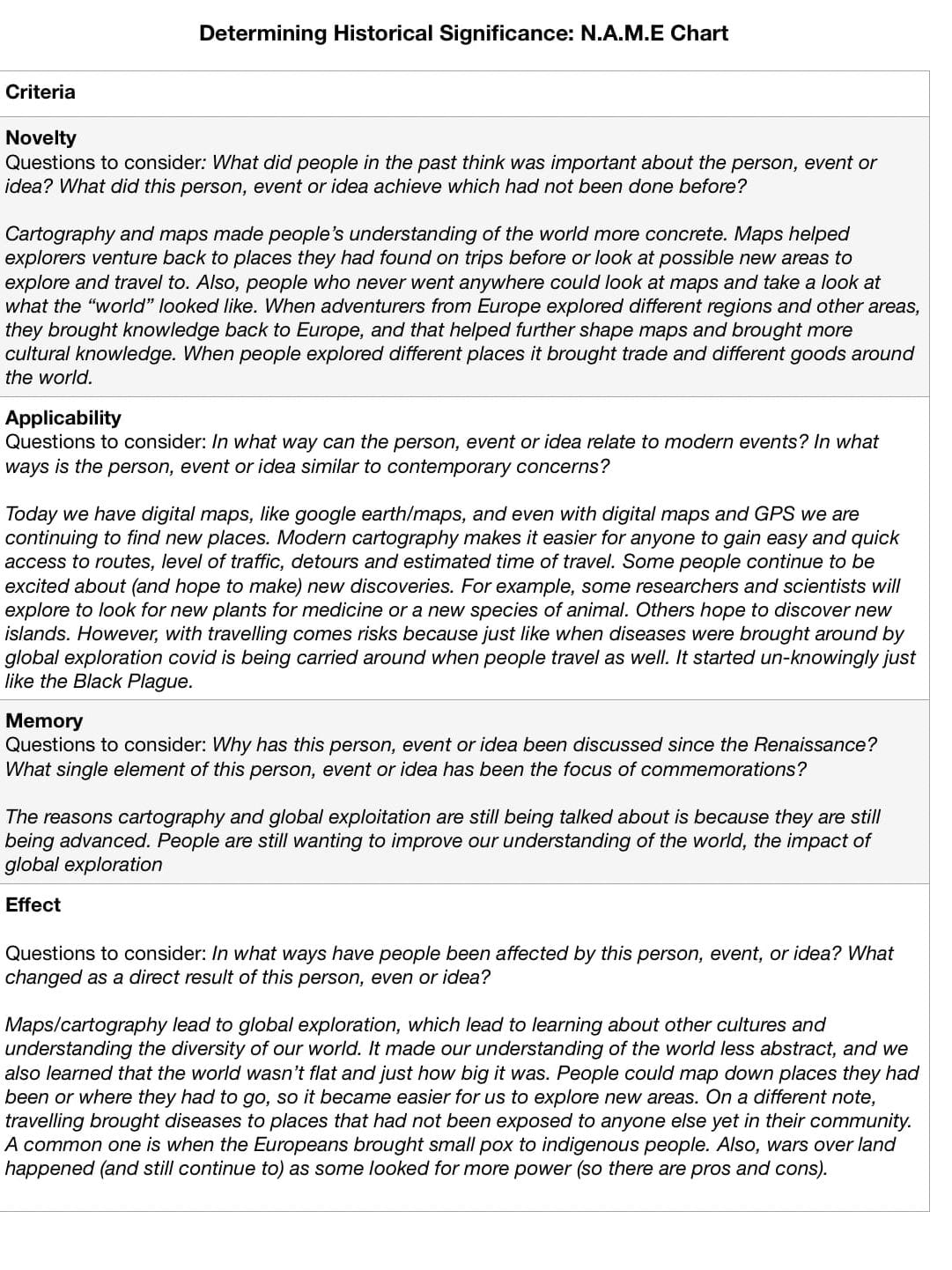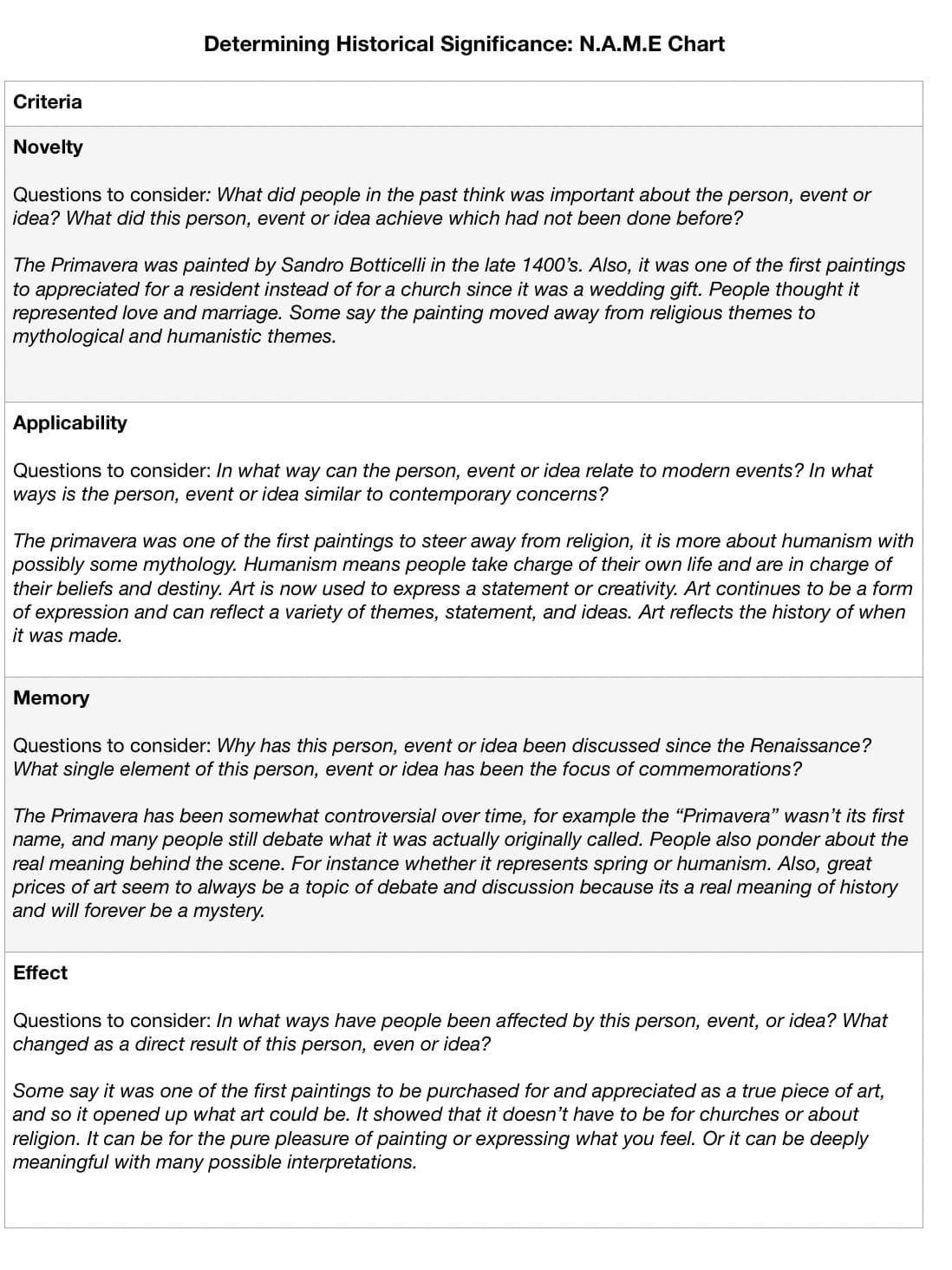 The latest project the Grade 8s had to do in Humanities was a project called, “The Renaissance: A Change Engine”. The driving question was, “What significant developments emerged from the past and how have they impacted us today?”. The final overall products for this unit were a triptych and a paragraph about historical events from the renaissance.
The latest project the Grade 8s had to do in Humanities was a project called, “The Renaissance: A Change Engine”. The driving question was, “What significant developments emerged from the past and how have they impacted us today?”. The final overall products for this unit were a triptych and a paragraph about historical events from the renaissance.
How we started off was by doing a renaissance role play, where the class was split in half, and there were 4 different roles we might be given. There were the serfs, knights, lords and then monarch. The simulation role-play was to show and help us learn about the roles and responsibilities of the different classes during the renaissance time period.

My friend Hannah and I got the luck of becoming the “mighty” serfs who got bound to the land. We sat on the ground which showed that we were the lowest class, while the lords and knights sat on chairs. Our role was to serve everyone above us and we demonstrated this when we had to give away 3 out of 4 of our food tokens to the lord that ruled over us. The challenges we experienced were that serfs from the land beside us stole from our lord which made him want to take all our food tokens. 
When doing this role-play I thought about what class system we have today in Canada. Nowadays, some would say we don’t have a class system and we are an “open society” where others say there is an implied hierarchy. Currently, there are around 4 classes: upper, middle, working, and lower. Sociologists describe our class system being based on social inequality, for example, wealth and resources are unequally distributed which leads to different layers in our system. The following excerpt from William Little’s open textbook, “Introduction to Sociology-1st Canadian Edition,” gives a better explanation:
“Sociologists use the term social inequality to describe the unequal distribution of valued resources, rewards, and positions in a society. Key to the concept is the notion of social differentiation. Social characteristics — differences, identities, and roles — are used to differentiate people and divide them into different categories, which have implications for social inequality. Social differentiation by itself does not necessarily imply a division of individuals into a hierarchy of rank, privilege, and power. However, when a social category like class, occupation, gender, or race puts people in a position in which they can claim a greater share of resources or services, then social differentiation becomes the basis of social inequality.” (https://opentextbc.ca/introductiontosociology2ndedition/chapter/chapter-9-social-inequality-in-canada/)
Personally, even though I like the idea of it being ‘classless’ I wonder if it’s just natural for us to be split into different groups?
Our second assignment we did was the Iron Chef Protocol, where we were split into teams and then using a shared keynote we worked fast to create a presentation. The reason it was called Iron Chef Protocol was because just like in the TV show, Iron Chef there is a secret ingredient involved. For our task we had to find information to solve the secret “ingredient”. Each team member was given a topic to read up on, which were (1) the Italian city-states, (2) The Silk Road, (3) The Crusades and (4) The Black Death. We had to edit a slide that looked like this: 
I was given the Italian city-states. Unfortunately, my slide got deleted and things got compromised so we didn’t present very well and I was unable to solve it at the time. My secret ingredient was to figure out which important figure from history was born in Genoa. I did some research later on, afterwards, and I believe the person was Christopher Columbus. He is known for his exploration of America.
Finally, we came to the point in the term where we got to go on our first outdoor trip and we hopped on over to Loon Lake! And while it was fun there was still more learning to be had. At Loon Lake we learned more about SuperimposeX to help us strengthen our layering and masking skills. I tried to mask my friend Gwen and I coming out from a tree over the lake:
Later on we learned more about blending and layering (at school this time), we had some choices between masking Beyoncé and a microphone and Cristiano Ronaldo and the World Cup. I chose to do Beyoncé but I used a ring instead because of her song “Single Ladies (Put a Ring on It)”:
(I think it could use more blending)
Mid-way through our Renaissance unit, we dove deep into the historical significance of a particular invention, the printing press and we presented our learning using the NAME chart. The NAME acronym means: Novelty, Applicability, Memory, and Effect.
The printing press came out around 1436 and was designed by Johannesburg Gutenberg (info here) and it is amazing how significant and important this invention or “printing evolution” has been on society. The ability to mass produce communication and share knowledge more globally lead to important advances in all fields such as the arts, education, and science. I won’t go into great detail here about the changes because I would be here forever. Society definitely wouldn’t be functioning like it is today, if it weren’t for the printing press. The advances since this invention have lead to our current ways to communicate such as newspapers, magazines, and especially the digital world like the internet has helped us connect even faster and more efficiently. Although it was interesting to learn about how these changes were not always liked by everyone. For example, some people in political powerful positions feared if citizens gained knowledge they could challenge their ideas and maybe cause backlash. For more information on it’s impacts on communication please go to this article: https://courses.lumenlearning.com/atd-herkimer-westerncivilization/chapter/the-printing-revolution/
Fast forward a little bit into our exploration and understanding of historical significance of events and inventions from the European Renaissance and we soon learned that glasses, also lead to great change. When asked to write our first paragraph, we had to vouch for why we chose a certain invention. The inventions you could have chosen from were glasses, human anatomy, the heliocentric theory, and the measurement of time and I wrote mine about glasses. As you will read in my paragraph below, I think glasses are historically significant because they have gone way farther then just helping people see what’s right in front of them. Like the printing press, the invention of glasses allowed people from all fields get access to better understanding of the world. For example, on a basic level glasses helped people have better sight in order to see their surroundings. However, I would say that the advances in the technology of the lens afterwards is what really created change. For instance, telescopes allowed astronomers to understand our universe and in turn helped us explore and create maps.
We then got into our second round of NAME charts when we had to create 4 name charts about 4 different categories of the renaissance which were: individuals, the arts, inventions, and societal changes. The ones I chose were Galileo Galilea, The Primavera, The Printing Press, and Cartography + Global Exploration.
 (those where the things we could choose from)
(those where the things we could choose from)
First, I started with Galileo, who had the theory that all planets revolve around the sun. No one accepted his idea at first but eventually in around 1633 they did. It has helped shape our knowledge of space. Scientists have been able to get the basic of modern physics and astronomy with the help Galileo’s inventions and discoveries. Also, as I mentioned above the invention of glasses and in turn the telescope and other lenses helped with exploration. Galileo then went on to create his own telescope after he studied lenses and after he heard about danish perspective glass, which helped him create his telescope.
Here are all my completed NAME charts, I’m not going to go into detail for all of them because that would take forever:
Now we started to get a groove into the final projects, the triptych and our final paragraph.
A triptych has 3 different sections/panels, and when creating ours we were instructed to put the 4 things we did in our NAME charts in a specific panel. The art and a figure from the renaissance went into the left one, and the societal change and invention went into the right one. For the middle panel, that’s where we put a representation of ourself in it as well with modern creations that are or relate to each of the old inventions. 
Here is the reveal of my final triptych, the moment you all have definitely been waiting for…
Tada: 
When creating this, I discovered who Stephen Hawkings was and how he was similar to Galileo in that he has influenced society as well. Interestingly (and semi fun fact!), Stephen Hawking was born on the 300th death anniversary of Galileo Galilei. They are both similar in that they both were interested in and have studied space, for example, Galileo found out about the moon’s craters while Stephen Hawking’s studied black holes. Both have helped us question and get a better understanding of our world.
Now we have the final paragraph, and I decided to do my on humanism. The reason I chose it was because when I was doing my NAME chart on the Primavera I got caught up in the research on the topic of humanism and it interested me. Before we started to write the actual paragraph we had to state 3 reasons why we wanted to, then we had a conversation with either Mrs Maxwell or Mr Harris (Cody Harris). Writing this paragraph was hard but what helped was writing down notes so I could organize all the information I was reading and understand the topic better. Here is the thing though, my notes were on real paper with an actual pen, crazy right? Sometimes old technology is better… After that, I was able to write this amazing paragraph: 
Finally, my takeaway from all of this is that learning about the past is important so we can learn from history’s mistakes and/or evolve and continue to build on what we have learned. When looking back on the inventions from the renaissance I can now almost automatically see the connections between then and now and why we are where we are today. Knowing about the past makes us have appreciation for why things are the way they are and why certain people are significant and have pushed inventions and ideas forward. Now there is meaning for me behind names, for instance, beforehand the name Galileo only reminded me of the song Bohemian Rhapsody… I also can appreciate education, I wonder how things like communication and education will continue to grow and evolve. What are our future significant historical events going to be and how will we go down in history?



